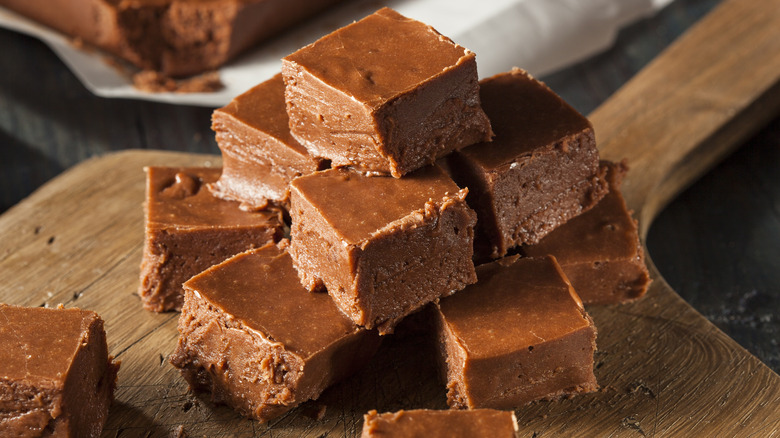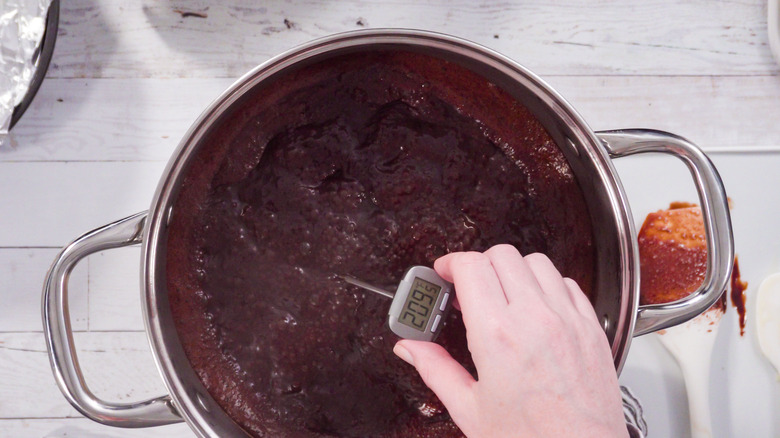Why Your Homemade Fudge Didn't Set And How To Fix It
People often say that baking is a science, and they would be right. When it comes to confectionery, that scientific precision is especially important. If you've had a go at making homemade fudge, for example, and it's currently sitting gloopy in your fridge, a mistake in your method is likely to blame. But don't worry, stubborn fudge is far from unfixable.
Fudge gains its unique properties due to the chemical changes caused by intense heating and cooling. Not heating it enough (or stirring it as it heats) is often the cause of fudge becoming grainy or not setting properly. Fudge should be heated to between 237 and 239 degrees Fahrenheit to achieve the correct consistency — even a few degrees off, and you could end up with an unset mess that could sit in the fridge forever without firming up.
Luckily, the fix is easy — just pop that fudge back into the pan with about a cup and a half of water to help it dissolve, and heat on low until it does. Then, gradually crank up the heat until it comes to a boil, ensuring it reaches the 237-degree threshold. After that, simply remove it from the heat, cool, and beat as per your recipe. That's all there is to it — an easy fix for foolproof fudge. Once you master it, the world is your oyster: From minty mojito fudge to decadent chocolate, the possibilities are endless.
Some tips and tricks to ensure successful fudge
There are a couple of extra things you can do to ensure your fudge comes out perfect every time. One requires very little effort, but will be instantly transformative: Buy yourself a sugar thermometer. Much like a meat thermometer ensures you cook a perfect steak, a sugar thermometer can make sure you never worry about heating your fudge incorrectly again. Most sugar thermometers clip onto the side of your pot, so you won't need to worry about burning yourself, either.
Also, remember to use a wet pastry brush to prevent sugar crystals from forming on the walls of your pan as the fudge heats — this'll ensure you don't waste any sugar and avoid any burning, which can create a nasty aroma that offsets the subtle creamy sweetness.
Finally, don't stir your fudge as it heats. Stirring will agitate the mixture and cause the sugar to crystallize, preventing you from achieving the correct texture. Instead, be patient! Heat it gently, brush the sides down, and have faith. It might take some focus, but you'll nail it in no time. Or, you could always skip the cooking process entirely, and make an addictive peanut butter fudge with just two ingredients. We wouldn't blame you.


